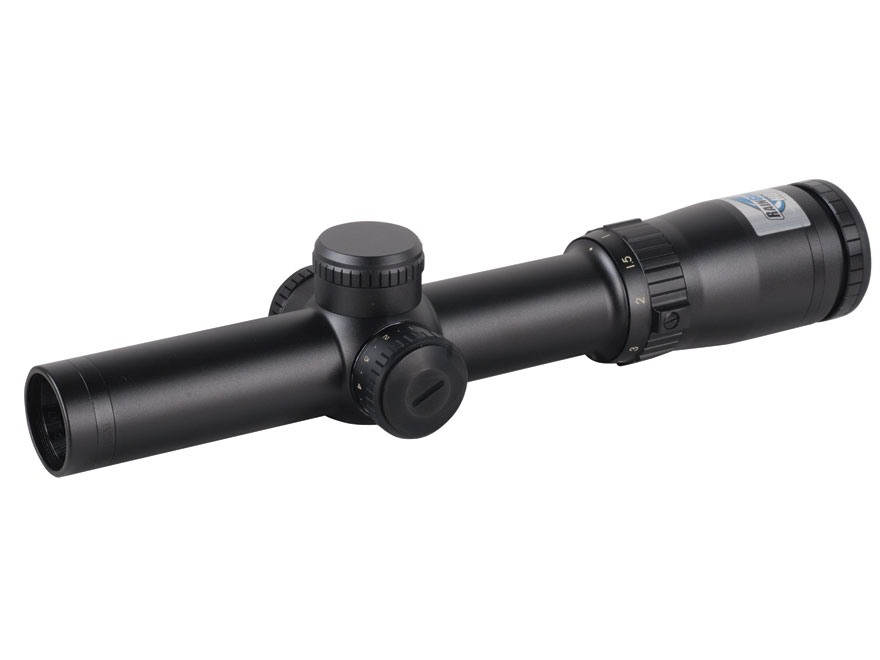

And the Elite Tactical SMRS is one the latest.
Standing for Short to Mid-range Riflescope, the SMRS lineup includes four distinct models, all of which bear the same 30mm tube construction and 1-6.5x24mm lens arrangement. Bushnell's first offering in the short-range tactical market, the SMRS' spec sheet reads like many of its competitors: it's made of forged aluminium, features fully multi-coated optics, and boasts a shock-proof, water-proof and fog-proof design. However, like many of Bushnell's premium scopes, the SMRS lineup also feature Bushnell's familiar water-repelling RainGuard HD coating; a feature that's unmatched on either Leupold or Vortex's offerings.
But the differences don't stop there. Recognizing that competitive shooters don't all appreciate the same reticle nor shoot the same cartridge, Bushnell's fitted the SMRS with two available reticle arrangements. The BTR-1 reticle is an illuminated, ballistically calibrated reticle that is optimized for use with 5.56/.223 caliber rounds. This bullet drop compensating (BDC) reticle provides accurate ranging and aiming to 600 meters. The BTR-2 is an illuminated mil-hash reticle that allows for ranging, holdover and windage adjustments. But the big news is that both the BTR-1 and BTR-2 illuminated reticles are available in first or second focal plane.
What does that mean, precisely? Well, although it might sound complex, the reality is blessedly simple. For optics with the reticle in the first focal plane, adjustments to the magnification also act upon the reticle, causing both the image in the scope and the reticle to grow in relation to one another. As a result, any bullet-drop compensating or mil-dot reticle system rendered in the first focal plane will remain true at any magnification. This in turn can make it much easier to get an accurate holdover on a target, and can also allow for accurate ranging of a target at any magnification setting. Conversely, second focal plane optics maintain the same size reticle regardless of magnification setting, which means that BDC holdover points, mil-dots, and ranging marks will only be accurate at one magnification setting. However, the second focal plane isn't without its own benefits. As the reticle does not grow larger at higher magnification settings, second focal plane optics can allow for slightly more accurate fire at smaller targets, as the reticle posts remain thinner and subsequently obscure less of the target. This makes them a popular choice amongst those that prefer to set their windage and range via target turrets, while the ability to get quick and accurate holdovers makes first focal plane optics a popular choice amongst those looking for faster target acquisition and engagement.
In any case, since the SMRS can be had in either reticle in both first and second focal planes, the SMRS can meet the demands of both the quick competitive shooter as well as the deliberate and accurate modern hunter. However, as the first focal plane variant requires a slightly more involved manufacturing process, it carries an American MSRP of $2,119.95, while the second focal plane versions are given a price tag of $1,967.95. However, in a move that's sure to surprise many familiar with Canadian optic pricing schemes, both versions can be found at Canadian retailers with price tags starting at just $1,200 dollars! And since they're all covered by the same limited lifetime warranty that's covered Bushnell products since 1984, their quality is assured as well. Look for a hands-on test in a future issue.